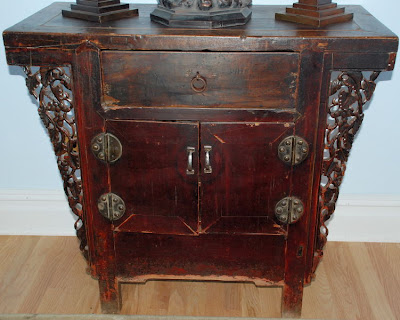This edition of The Magpie Mason is the fourth attempt to rectify past negligence in blogging (a disappointment to the kids, for which I’m truly sorry). There are 10 or maybe more events from 2010 that I never got around to sharing with you – lectures, ceremonies, Germanic beer fests, etc. – and before we get too far into 2011, I’ll try to catch up on last year’s happenings. No lengthy articles, but some photos.
The Mgmt.
 |
| WM Phil Brown tells of an ancestor who died in the U.S. Civil War. |
Worshipful Master Phil Brown led a dedicated band of brothers and their wives on the trip. After this meeting, they all took a tour of several Civil War-related historic sites in New York City, like Grant’s Tomb.
The lodge opening was fascinating! An impromptu combination of Virginia, Delaware, New York, and possibly New Jersey rituals, yet, like Garibaldi’s EA°, somehow everyone understood exactly what was happening. (If you are unacquainted with lodges of Masonic research and education, they tend toward informality when it comes to ritual work. These lodges do not make Masons, so there is no initiatic work, nor do they work much else in ritual, beside the installation of officers, so there is never any ritual instruction, and that’s just the way we like it. But I digress.) There were brethren present from those four jurisdictions, plus more from the United Grand Lodge of England, as RW Bro. John, Junior Grand Deacon of the Provincial Grand Lodge of Staffordshire, was attending his first lodge meeting in the United States. It was almost like a night at Alpha!
It is true that some research lodges lack inspired talent to translate the evolution of Freemasonry into relevant information that might inspire the brethren today, and therefore these lodges can lack a spiritual spark, the kind of energy necessary for creativity and purposeful, meaningful teaching. But don’t allow that all-too-common affliction prejudice you against attending the meetings of these brethren. Most of these lodges are getting the job done.
On this Saturday morning at Adoniram Lodge, I noted the power evident when one’s love of Freemasonry meets his fascination with Civil War history. You might not think the two belong together, but learning how specific incidents of Masonic charity helped to humanize the combatants in each others’ eyes can restore a jaded view of the world. One of the accounts related by W. Brown concerned a Confederate officer’s plea for relief for his men, to which a physician (a Mason from New York) replied with clothing and money for incidental expenses.
Civil War history is laden with accounts of charitable relief and life-saving mercy shared among Freemasons, famous and anonymous. These true stories should challenge us to consider what we would do in such circumstances.
The 2011 meeting schedule of the lodge, subject to change, is:
April 9 in Petersburg, VA
July 9 in Winchester, VA
October 1 in Saltville, VA
The other star attraction of the morning was the lodge building itself. This was my first visit to Adoniram Lodge, which has been undergoing a top-to-bottom, inside out renovation. Even its name has been fixed; for too long it was Adoniram-Highland, Wakefield Rising Star Lodge, thanks to various amalgamations over the years. Today, the brethren wisely go by Adoniram Lodge.
I'll let these photos speak for themselves, but when was the last time you visited a lodge decorated with 18th century Chinese furniture?
 |
| Yes, that is correct. A Masonic Temple. Not a center, nor a facility, nor a hall, but a place for conTEMPLAtion. |











































































































